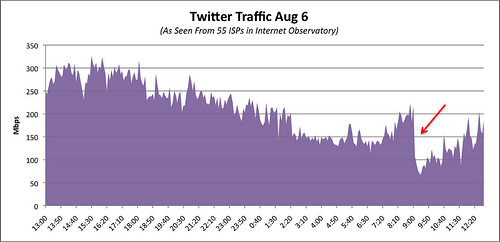Business
Twitter outages and Forrester predictions
In my last post about Forrester's predictions, I suggested that Enterprise 2.0 won't pan out the way they suggest.


Consumer services like Blogger, Facebook, Netvibes, and Twitter are aimed squarely at consumers, and they typically offer free services supported by advertising. Because corporations do not pay for access to these sites, we do not consider them as enterprise Web 2.0 sitesWhile there seems to be a high tolerance for outages on free services - people are not ostensibly abandoning services because of service issues - that cannot hold true for enterprise versions of the same type of application or service. Twitter has come in for some sustained criticism. No-one is sure what's going on, but the latest set of problems are not going away. MG Siegler thinks it's a communications issue:
The real problem here is that it's not clear there is any problem. It's not like the site is down. It's just not working correctly. You shouldn't just leave a broken site up with no explanation that it's broken.Really? Check out the screenshot I just cut 'n' pasted from Twitter's GetSatisfaction site. My Irregular colleague Jeff Nolan has a different take:
Siegler’s comments about service status updates is really customer service 101 for companies like Twitter. I can’t imagine anyone saying at this point that when there is a major service disruption that it’s no big deal not to post any updates in places where people can find them.The broader question is who cares? Outside the bubble culture of Silicon Valley, I doubt too many people care less. TurboTax got itself a Twitter presence in time for tax filing season but of its millions of users, how many people cared enough to set up a Twitter account much less follow? 102. It's great to see the kind of innovation that Twitter has spawned. It points the way towards the kind of co-creation that SAP likes to talk about and which can give outlet to many useful (and just as many useless) services. But if the reality is that only a modest handful (by global standards) really care about the service then why would anyone include it in an analysis of possible technologies for inclusion within an enterprise context. The only reason I can think of is to serve as a signpost for what might be delivered which, as the report authors suggest, will probably be subsumed into a broader offering.
